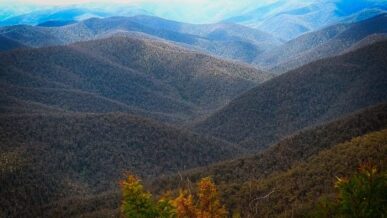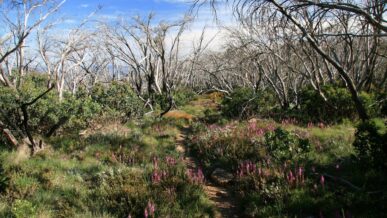Connecting habitat for threatened species
Landscape-scale vision
No species exists in isolation. Species are always nestled in a complex web of relationships that characterise the ecosystem they inhabit. Thus, when approaching the conservation of a singular species, it is fundamental to maintain a systems view and protect the habitat it inhabits, its food and water source as well as reduce external threats such as invasive species.


A new way forward
This project is trying to adopt a new way forward for conservation - one that moves beyond focusing on singular species to adopt a whole-of-landscape approach.
While Spot-tailed Quolls are the initial focus of this project, as it expands we anticipate it will achieve benefits for multiple species and the health of the East Gippsland Wilderness landscape more broadly. This will be achieved by working concurrently across single species recovery, habitat enhancement and climate change adaptation activities.
As an apex predator, the Spot-tailed Quoll is reliant on a healthy, flourishing habitat and food web to ensure its long-term survival. In addition, a single male quoll has a large home range, up to 400 ha, so each habitat unit requires habitat landscape enhancement activities as opposed to niche, specialised habitat work for species with small home ranges.
Quoll conservation has beneficial flow-on effects for a broad range of other threatened and non-threatened fauna and vegetation communities, making the quoll the perfect catalyst for a wider, multi-year (10-30 year) Gippsland-landscape scale project.
East Gippsland Wilderness
The East Gippsland Wilderness is a unique place of national, cultural and international significance. Even so, it has not received the recognition or funding that an international biodiversity hotspot requires.



Protecting our wild places
East Gippsland Catchment Management Authority recognises the East Gippsland Wilderness as unique with an extraordinary diversity of plants and animals, rare ecosystems, vast forested environments and featuring large tracts of continuous native vegetation and ecosystems connecting the New South Wales' wilderness through to the Southern Victorian Coastline.
It supports greater than 50% of the Victorian range of 17 nationally listed threatened species and over 150 threatened species listed as threatened for Victoria (EGCMA, 2022).
Preventing further habitat loss
For many years large tracts of public land have been subject to extensive forestry activities, causing landscape habitat loss and associated continued decline of our native animals. With the recent cessation of logging on public land in East Gippsland, there is a unique opportunity to influence future land management across this estate and to support the recovery of these threatened species and the degraded forests.
In 2019−20, bushfires affected over 80% of this area, burning a large proportion of the native vegetation and killing or displacing large numbers of animals. Recovery needs our continued support.
Pest plants and animals are a major ongoing threat, foxes, cats, deer and pigs are directly impacting this suite of threatened animals and their habitats. Existing threat reduction programs need to be urgently scaled up to help change the trajectory of species decline.
Climate change projections are for increased severity and frequency of fires and resilient landscapes are crucial to the survival of the unique biodiversity of this local area (EGCMA, 2022).
This large tract of wilderness links crosses NSW, the Alps and the Coast allowing for climate adaptation through the migration, movement and evolution of species across a variety of habitats and altitudes. Also providing significant refugia during future wildfires, fuel reduction and drought.
Therefore, other threatened species that will directly support these benefits from this approach include some of Australia’s most iconic species, including:
- Southern Brown Bandicoot
- Brush-tailed Rock-wallaby
- Long-nosed Potoroo
- Long-footed Potoroo
- Glossy Black-cockatoo
- Gang Gang Cockatoo
- Greater Glider
- Powerful, Masked, Barking and Sooty Owl